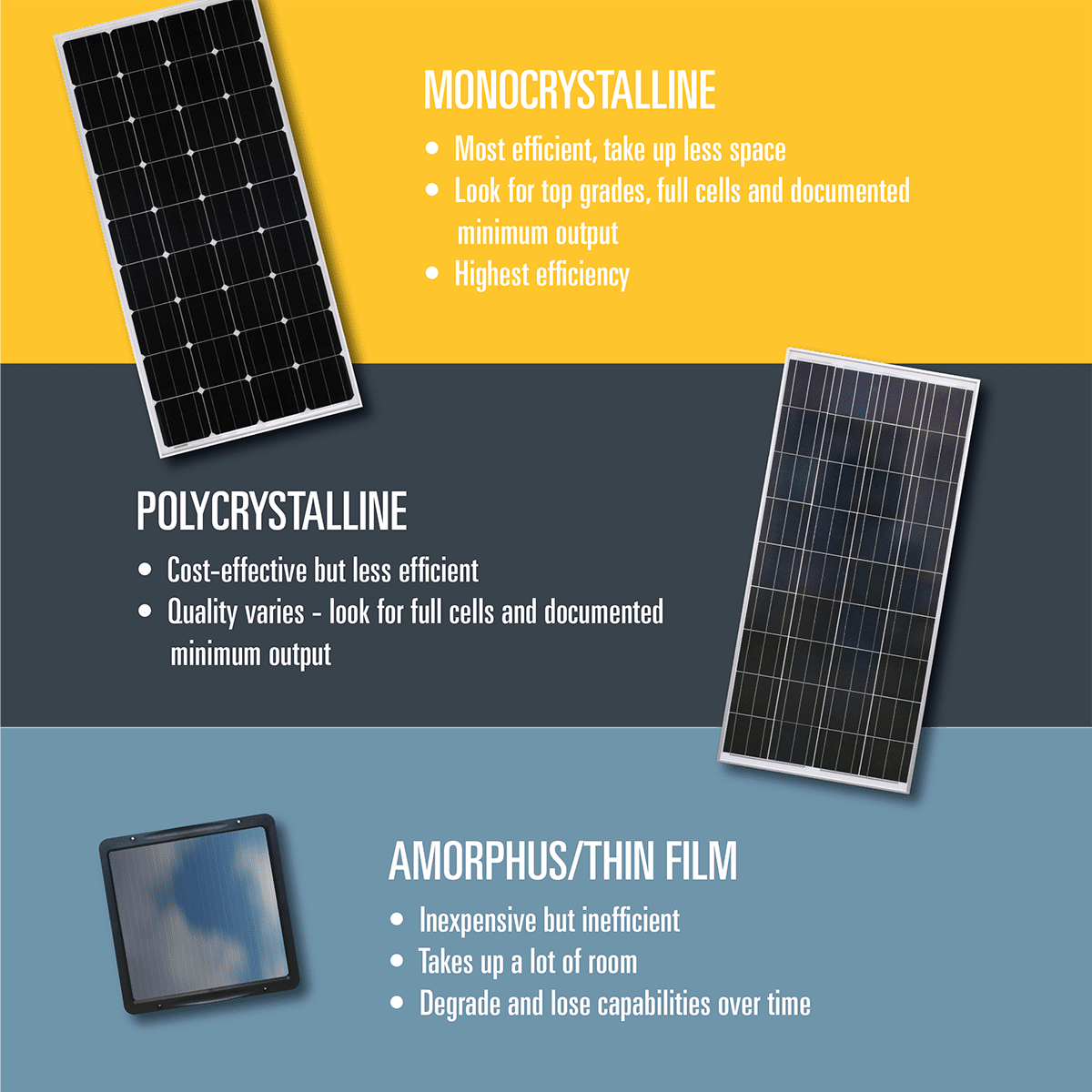Off-Grid Power – Air Conditioners Solar power and lithium battery technology have revolutionized the way...
Read MoreRV Solar 101: Solar Panels
How they work. Solar panels are made up of individual solar cells that convert sunlight into energy. That energy comes in the form of direct current (DC) electricity, which is used to charge and replenish your RV’s batteries. Typically, several panels are joined together, creating a ‘solar array.’
What to look for. There are three common types of solar panels — amorphous, monocrystalline, and polycrystalline.
While amorphous panels are the least expensive, they are the least efficient and take up the most room. They can also lose up to 30 percent of the power-generating capabilities in their first year—they actually degrade when exposed to sunlight!
Polycrystalline panels take up roughly half the space to produce the same power as their amorphous counterparts, however, they can vary widely in quality. Look for panels with the highest rated wattage for their size. A smaller footprint means a more efficient panel.
While monocrystalline panels are also available with different grades of cells, they are almost always more efficient than poly panels. They also typically last longer, making them the wallet-friendly choice.
Rigid versus flexible panels
Rigid panels are more commonly used than flexible panels. Rigid panels are made with tempered glass, are very durable, and typically come with much longer warranty periods.
Flexible panels are usually reserved for specialty applications — when the panels need to be molded to curved surfaces, or when where there are height/weight constraints. While flex panels may be up to 80 percent lighter than rigid panels, they are much more susceptible to damage.
For cost, durability, and warranty length, it’s tough to beat the value of rigid glass panels.
Buying tips
- Don’t be tempted by cheap panels. They are usually made with a lot of cut cells—they may be cheaper but they’re less efficient. Full, complete solar cells perform better and are worth the additional cost.
- Watch out for manufacturer claims of wattage output. The best manufacturers will provide a minimum output for their panels, as opposed to maximum output. Always ask your seller to document their panel output range (plus/minus percent).
HOW SOLAR WORKS – QUICK LINKS
LATEST NEWS
Watch product troubleshooting videos, read the latest in company updates, and stay up-to-date on trade-shows and events.
Creating the Ultimate Solar-Powered Car
Few people have a more diversified portfolio when it comes to custom car builds than...
Read MoreGo Power! Wins Gold in
Go Power! Wins Gold for Favorite RV Solar Product in the 2024 Wildsam Reader’s Choice...
Read More
STAY UP TO DATE
Get news, product specials, and event invites directly to your inbox.








